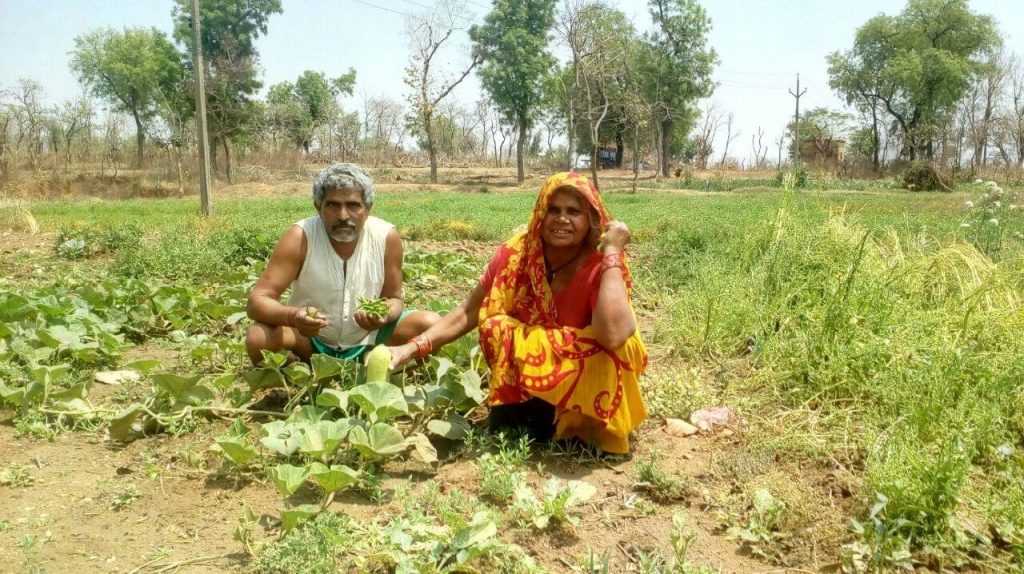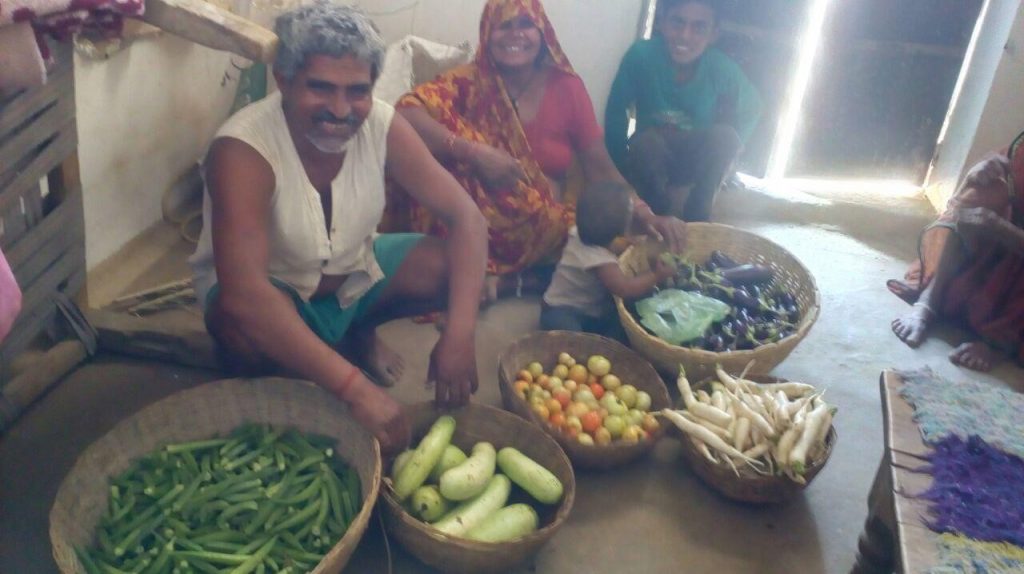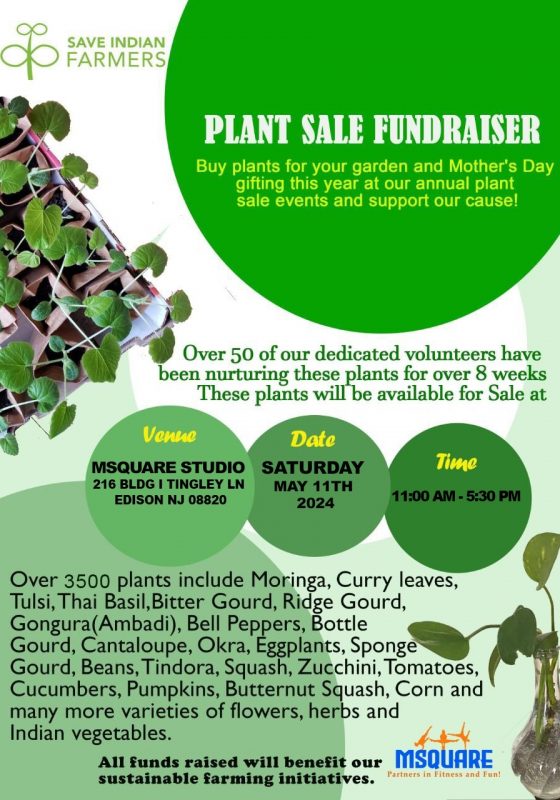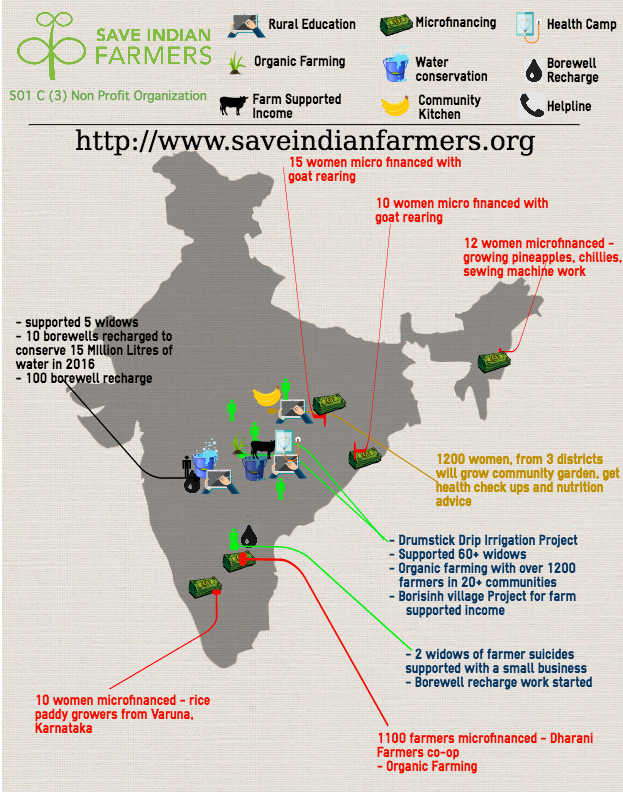Bundelkhand is a region at the centre of India, spread across thirteen districts in the states of Uttar Pradesh and Madhya Pradesh. The region has seen 15 droughts in the last 17 years. As a result of the severe drought and acute shortage of water, many people in the region face a livelihood crisis. Farmers commit suicide due to continuous crop failure and huge burden of loans, women struggle to make ends meet, children suffer from malnutrition and elderly people are abandoned by their children who are forced to migrate to other states and cities to find work.
To alleviate this situation and support these farmers, Parmarth Samaj Sevi Sansthan, along with with Save Indian Farmers and Healing Lives, has been running an emergency relief support program “Drought Mitigation in Bundelkhand Region” in 5 villages – Nadiya, Nandanpur, Kanthi, Koriya and Bangyan of Jatara block, Tikamgarh district (Madhya Pradesh) from November, 2017.
Through this program, farmers are educated about various low cost agricultural practices such as drip-irrigation, mulching, sprinklers, System of Wheat Intensification (SWI) and System of Vegetable Intensification (SVI). They are encouraged to adopt organic vegetable cultivation after the Rabi season so that they can make a reasonable income and have healthy food to eat.
The account below is a case study of a specific farmer participating in this program.
Chhidami Yadav, 52 years of age, has 40 years of experience in agriculture / farming in Nandanpur. He owns 10 acres of land but due to the water crisis, he is only able to use 2-4 acres. He grows wheat and pearl millets during the Rabi season. In the Kharif season, he along with his sons migrates to the city in search of jobs, leaving behind the female members of his family alone at home.
He has 15 members in his family – his mother, wife, 4 sons & their wives, and 4 grandchildren, 3 of whom are in the IInd, IVth and VIth standard respectively at the middle school in a nearby village. He also has livestock – 25 goats whose dung is used for preparing organic manure, 15 buffaloes whose milk is sold at Rs. 30/liter, ghee at Rs.500/kg, buttermilk distributed to the neighborhood and dung used as manure. He also has 3 cows whose produce is used at home.
After the intervention of Parmarth Samaj Sevi Sansthan, in the Rabi season he learned about low cost agricultural practices such as SWI & SVI. He has grown wheat in 1 acre, gram in 1 acre and barley in 1 acre of his land. In this Kharif season, he has grown vegetables such as tomatoes, chilly, brinjal, lady’s finger, coriander, taro roots, potatoes, bitter gourd, onion, pumpkin and sponge gourd in an organic way in 1 acre of his land.

He stated that he is very happy to do organic vegetable cultivation in this drought season. After the support of Parmarth, he has his own borewell recharged in addition to a well for irrigation. He sells his vegetable produce twice a week in a nearby big market at Gor village and earns around Rs.500 per market visit.

He said that working with the Parmarth team has provided him new learning experiences, especially with regard to organic farming, i.e, making of jeeva amrit1 and amrit pani2 using everyday ingredients.
When asked about the impact this program has had on his life, he mentioned that he has saved money by not having to buy pesticides and vegetables from the market. He is assured that he and his family eat healthy, organic vegetables grown on their own farm. This season, he was able to produce 4 quintals of gram, 12 quintals of wheat and 10 quintals of barley. His earning from the vegetable market have helped him spend more for his grandchildren’s education and standard of living.
Recipe to prepare jeeva amrit for 1 acre of land.
Ingredients:
- water – 200-250 liters
- cow dung – 10- 15 kgs
- cow urine- 3-4 litres
- jaggery – 1-2 kg
Procedure:
Mix all ingredients and keep them in the shade for 3-4 days. Stir the mixture once a day and it will be ready to use by the 4th day.
Recipe to prepare amrit pani
Ingredients:
- water – 200 liters
- cow dung – 10 kgs
- desi ghee – 250 gms
- honey – 500 gms
Procedure:
Mix all ingredients and spread on the field after sowing a crop.
_____________________________________________________________________________________________________________
About the Author
Prashansha Gupta was born in Banda District of Bundelkhand region. She works in Bundelkhand as a Reporting and Documentation officer, coordinating interactions between Save Indian Farmers and Parmarth.





